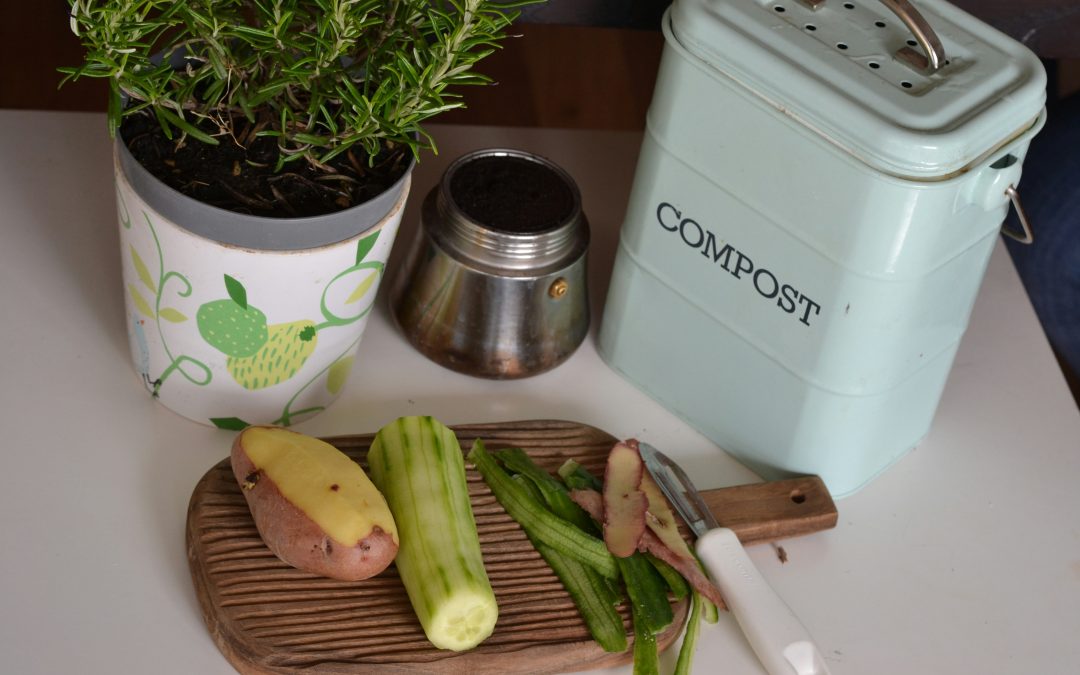Have you ever considered the fate of your banana peels and coffee grounds? Rather than disposing of them in a landfill, you have the opportunity to convert them into a nutrient-dense soil amendment that will benefit your garden. This method is known as composting, and it is among the simplest techniques to enhance your garden’s vitality, minimize waste, and connect more deeply with nature.
This introductory guide will lead you through the straightforward steps of transforming common kitchen and yard waste into “black gold” for your plants.
The "Compost Recipe": Understanding the Ingredients
A thriving compost pile relies on achieving balance. Consider it akin to a recipe that consists of four primary components:
- Greens (Nitrogen): These are the “wet” materials rich in nitrogen, which help heat up the pile and break down the organic matter.
- Examples: Fruit and vegetable scraps, coffee grounds, tea bags, fresh grass clippings, and fresh garden trimmings.
- Browns (Carbon): These are the “dry” materials that provide a carbon source. They add bulk and structure to the pile, allowing air to circulate.
- Examples: Dried leaves, straw, wood chips, shredded newspaper or cardboard, and untreated sawdust.
- Water: Your compost pile needs to be consistently moist to work correctly. It should feel like a wrung-out sponge, not soaking wet or bone dry.
- Air: Oxygen is essential for the microorganisms that do the hard work of decomposition. Turning your pile regularly introduces air and speeds up the process.
What to Compost (And What to Leave Out)
This section is of utmost importance for novices. Incorporating inappropriate items may lead to pest attraction or the development of unpleasant smells.
✅ Compost These
-
Fruit & veggie scraps
-
Eggshells (crushed)
-
Coffee grounds & filters
-
Tea bags
-
Grass clippings & leaves
-
Garden waste (untreated)
-
Shredded newspaper & cardboard
-
Straw & wood chips
❌ Do NOT Compost These
-
Meat, fish, or bones
-
Dairy products
-
Fats, grease, oils
-
Pet waste/cat litter
-
Diseased or pest-infested plants
-
Treated wood
-
Plastics, metals, synthetics
Setting Up Your First Compost Pile
You can use a dedicated compost bin, a simple barrel, or even a basic pile in a corner of your yard.
- Choose Your Location: Pick a spot that is well-drained and easily accessible. A shady or partially shaded area is best to prevent the pile from drying out too quickly.
- Start with a Base Layer: Begin with a layer of coarse, “brown” materials like small branches or straw. This provides airflow from the bottom.
- Layer Your Materials: Add alternating layers of “greens” and “browns.” A good rule of thumb is to use twice as much brown material as green material.
- Add Water: Moisten each layer as you build your pile.
Maintaining Your Compost Pile
Composting isn’t a “set it and forget it” process, but it’s not a lot of work either!
- Turn It Regularly: Use a garden fork to turn and mix your pile every one or two weeks. This aerates the pile and helps the decomposition process move faster.
- Check the Moisture: If the pile looks dry, add some water. If it’s too wet, add more “brown” materials to soak up the excess moisture.
- Be Patient: Depending on the size of your pile and how often you turn it, the process can take anywhere from two months to a year.
How to Know Your Compost is Ready
Mature compost, often referred to as “black gold,” will exhibit a deep, rich hue and a granular texture. It ought to emit an aroma reminiscent of fresh, earthy soil—rather than a foul or sour scent. The original components that were added to the pile should no longer be distinguishable.
Putting Your Compost to Work
Now for the best part! Use your homemade compost to:
- Top-dress your garden beds: Sprinkle a layer of compost over your soil to add nutrients.
- Mix into potting soil: Add it to your container plants for a boost.
- Use as mulch: Apply it around the base of trees and shrubs to retain moisture and suppress weeds.
Conclusion
Composting is not merely a method for recycling kitchen and garden waste; it is a straightforward practice that transforms everyday scraps into a valuable resource for your plants. By ensuring the correct balance of greens and browns, maintaining adequate moisture and airflow, and steering clear of problematic materials, you can produce a consistent supply of rich, healthy compost. Your garden will not only flourish with enhanced soil and more robust plants, but you will also decrease the volume of waste sent to landfills. With a bit of patience and attention, you will quickly understand why compost is frequently referred to as “garden gold.”

